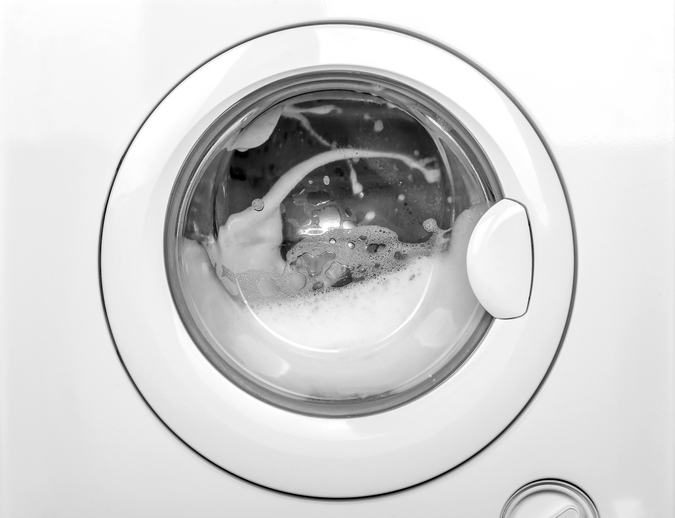As a homeowner, you know that furnaces and clothes dryers have filters that need to be cleared regularly. Maertin Heating & Cooling frequently reminds you (or nags you to death about, we know!) that, as air flows and circulates in the appliances, filters and traps catch debris. When dirt accumulates, it can cause poor performance – and can also lead to home fires.
However, not many of us know that the appliances that wash our clothes and dishes also need to be cleaned regularly. As water moves dirt around and away from our clothes and dishes, that dirt can cause problems for the appliance. A clogged trap in your clothes or dish washer can lead to water leaks, bad smells and poor performance. As much as we’d like our appliances to be maintenance-free, there are some regular steps we can take to extend the life and effectiveness of our washing machines.
A drawback of modern high efficiency clothes washing machines is that they have tendency to get a little funky-smelling. Experts recommend you leave machines open when not in use to help them dry out and keep any odors from developing. Wiping down seals and edges regularly will keep the machine in water-tight shape for longer. In addition to regular wipe-downs, Experts recommend running a cleaning cycle monthly. While your appliance manufacturer probably recommends a brand-specific cleaning product and advises against a popular internet suggestion of adding two cups of vinegar to an empty hot water cycle, the truth is running an empty machine through a warm water cycle will flush out any detergent build-up. Add vinegar to that cycle if you’re experiencing bad smells or really poor performance.
Your washer may also have lint tray or trap, but it’s not always easy to find. On older top-loading machines, the lint collector is in the agitator. On newer machines, the lint collector might be near the top of the washing drum or the end of the drainage hose, depending on the model. Take a look at your machine’s manual or search YouTube using your model number and “clean lint trap” as search terms. Locate your lint collector and you’ll discover the microscopic build-up your wardrobe has left behind – there might even be enough lint to explain a few missing socks. Rinse the filter with warm water, until the water runs clear. Experts and appliance manufacturers recommend you clean the lint collector regularly and frequently. If your model indicates you have a self-cleaning trap, this is a step you don’t have to worry about.
If an appliance owner doesn’t know their washing machine has a lint trap, they’re going to be absolutely floored to learn their dishwasher has one, too. Of course, on a dishwasher, the lint trap is really a food filter. This filter serves the same purpose as the one in the washing machine: it catches bits of debris from the washing cycle so the machine stays functional and the dishes get clean. That debris needs to be cleaned out regularly, at least once every few weeks but ideally, after each use. A clean filter helps water flow freely and dirt gets fully flushed out of the system. Usually, the filter is found at the base of the unit and can be twisted to remove. It may have a cap on top of it. Remove the cap and filter, give it a good wash and thorough rinse, and replace it.
In addition to regular filter cleaning, manufacturers recommend you keep your dishwasher’s seals and surfaces wiped down to keep the machine water tight and prevent leaking. Additionally, the inside of the machine should be wiped down and cleaned monthly. In particular, the washing arm of the machine should be wiped and the various nozzles and sprayers wiped to keep them free of any blockages. While you might be tempted to rinse nearly everything off of your plates, this actually makes newer machines less efficient. Because they can’t detect any real dirt, they don’t wash as well. Experts recommend scraping anything larger than a grain of rice off of plates, but skipping the rinse.
While a clogged lint trap won’t cause a fire in a washing machine like it could in a dryer, impairing the flow of water in an appliance is how many incidences of water damage can begin. Routine cleanings can help keep your appliances running longer and can help you identify any bigger issues early so you can call an expert to help keep your appliances running beautifully.
Have you changed your furnace filter but are still concerned about how your furnace is running? Schedule an appointment and we’ll come take a look!



